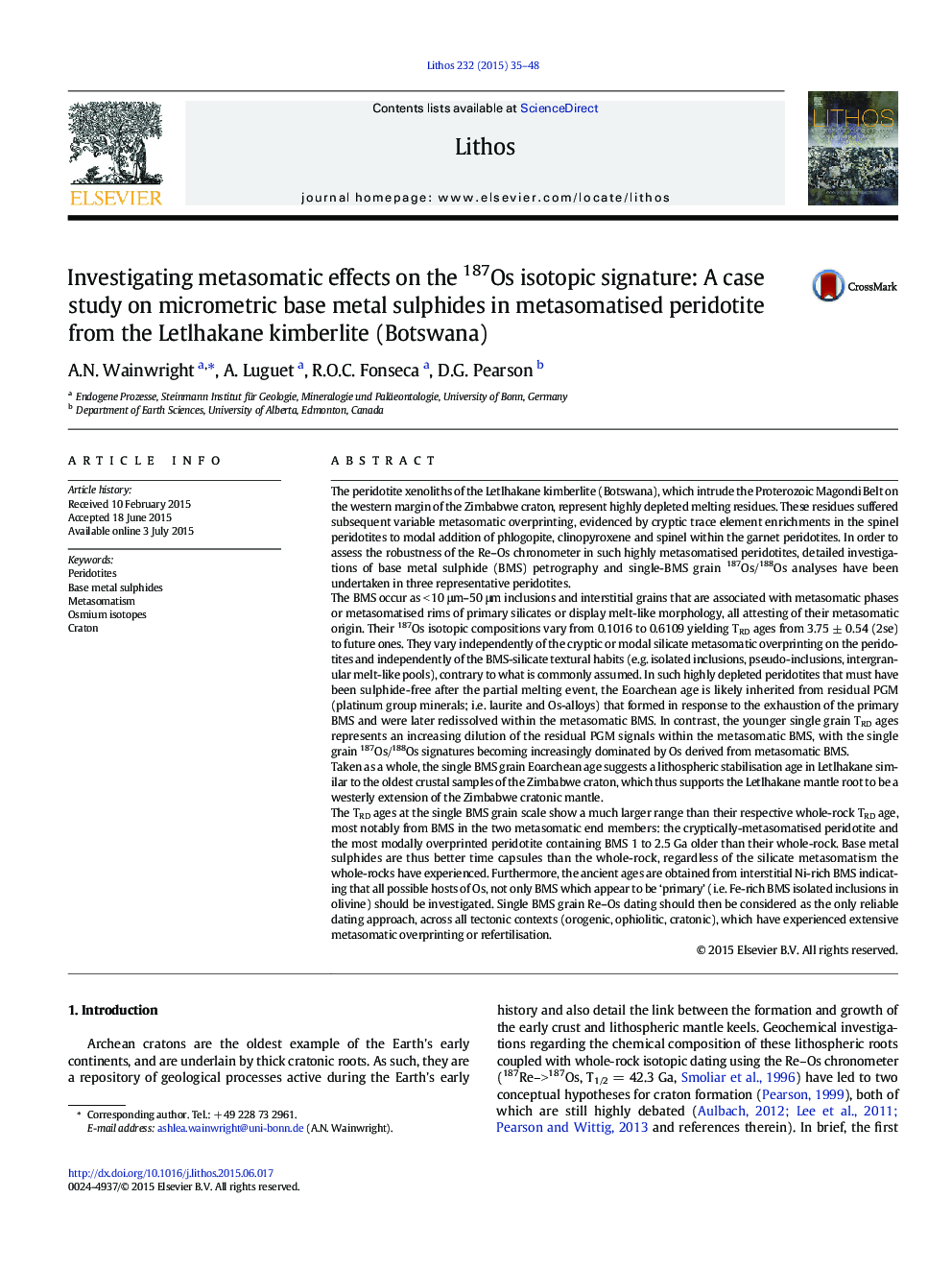| Article ID | Journal | Published Year | Pages | File Type |
|---|---|---|---|---|
| 6440657 | Lithos | 2015 | 14 Pages |
Abstract
The TRD ages at the single BMS grain scale show a much larger range than their respective whole-rock TRD age, most notably from BMS in the two metasomatic end members: the cryptically-metasomatised peridotite and the most modally overprinted peridotite containing BMS 1 to 2.5Â Ga older than their whole-rock. Base metal sulphides are thus better time capsules than the whole-rock, regardless of the silicate metasomatism the whole-rocks have experienced. Furthermore, the ancient ages are obtained from interstitial Ni-rich BMS indicating that all possible hosts of Os, not only BMS which appear to be 'primary' (i.e. Fe-rich BMS isolated inclusions in olivine) should be investigated. Single BMS grain Re-Os dating should then be considered as the only reliable dating approach, across all tectonic contexts (orogenic, ophiolitic, cratonic), which have experienced extensive metasomatic overprinting or refertilisation.
Related Topics
Physical Sciences and Engineering
Earth and Planetary Sciences
Geochemistry and Petrology
Authors
A.N. Wainwright, A. Luguet, R.O.C. Fonseca, D.G. Pearson,
